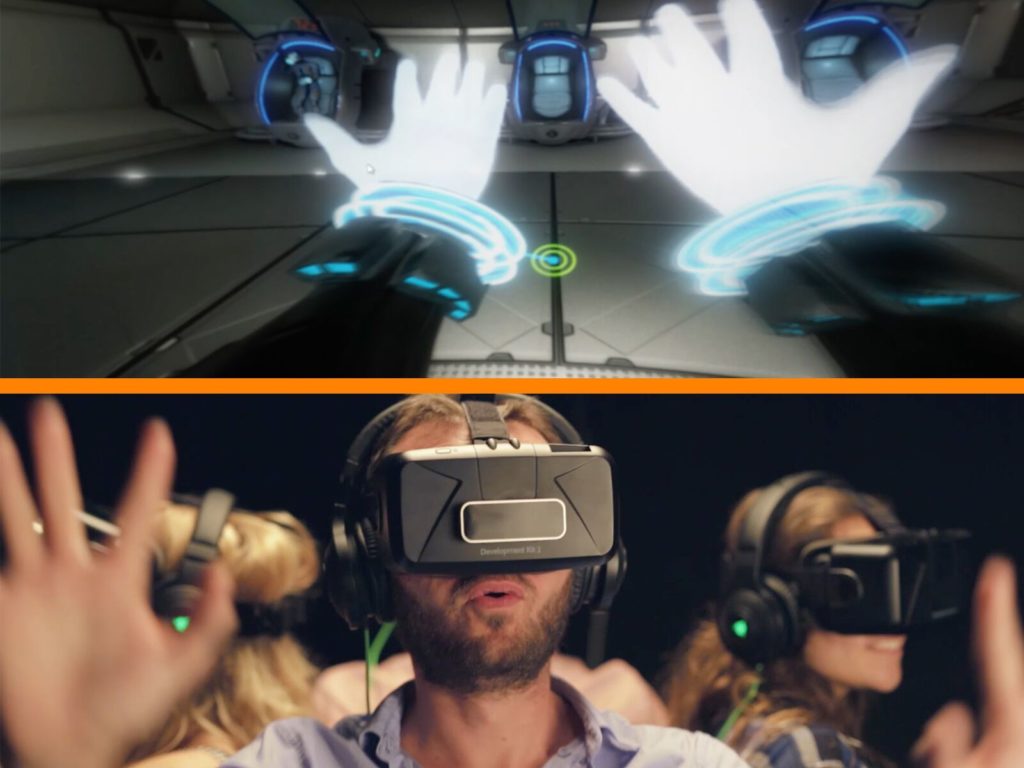 Escape Room/VR Combo
Escape Room/VR Combo
Entermission’s New Concept Coming to a City Near You!
How can we make this better, and how can we make operators more money? Those were the two questions Entermission founder Christal Ho asked before the platform came to life.
The answer was joining together virtual reality experience with escape rooms, which Ho knew quite a bit about as the master franchisor of Escape Hunt in Australia and New Zealand (the company is believed to be the largest escape room chain in the world).
First and foremost, for operators, it’s about more dollars per square foot. Entermission’s Mission Modules –– tricked out gaming chairs –– are situated in a small, 170 sq. ft. space that fits up to six players, who are seated for the experience.
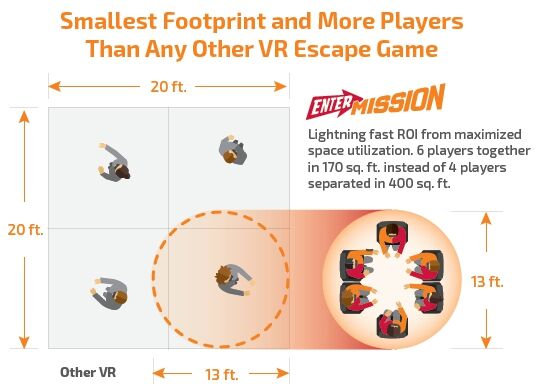
Entermission boasts that their setup earns more dollars per square foot for operators.
“With a typical VR platform, it’s usually around four players in 400 sq. ft.,” Ho noted. “But the more people you can fit into a smaller space, the better. There’s higher throughput and more dollars per hour. We’re effectively halving the amount of space needed.”
The escape room in VR concept also makes resetting for new players simpler. It takes at least five minutes – more likely around 15 – to properly reset a physical escape room. With Entermission, it’s a couple of minutes; just click a few buttons and clean the VR gear.
Another benefit for operators is fewer attendants are needed to manage the room. While physical escape rooms and many VR platforms typically need one attendant per room, that’s unnecessary with the Entermission system.
“In Sydney, we have six rooms and we have just two staff running all six rooms,” Ho said of her Virtual Reality Rooms facility. Ho founded VRR in 2017 and it’s being rebranded under the Entermission name. The first of its platforms in the U.S. launched with the opening of Zscape Games in the San Francisco Bay Area in mid-October (www.zscapegames.com).
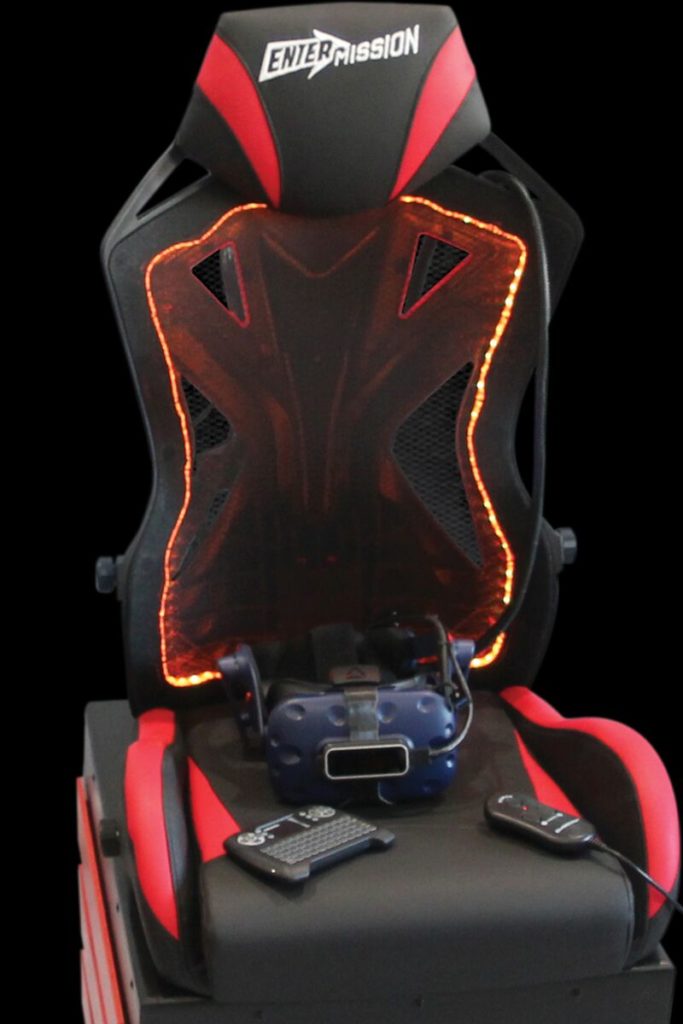
The Mission Module chair allows players to immerse into the experience thanks to its vibration and other environmental factors like wind, heat and smell.
“The new brand makes a lot more sense,” she explained. “It was a lot broader than in terms of just VR.” She worked with the industry’s “one-man marketing army” Andre Lawless on developing and launching the brand.
Now that operators know the pluses, it’s helpful to explain what Entermission’s VR escape room is from a player perspective.
The cinematic adventures – currently the two games Space Heroes and Mad Mind – allow players to have an immersive and intuitive experience. The games are set in “fantastical” locations on the VR side of things and equipped with puzzles like a traditional escape room, combining the best of both worlds.
Groups usually take about 50 minutes to complete a game, although some finish quicker or take a bit longer – anywhere from a half-hour to an hour.
With Space Heroes, players fly and float in outer space, exploring a space station and working to save the Earth from destruction. In Mad Mind, they enter the mind of a madman to save an innocent life. Thanks to the Mission Module’s vibration and other environmental factors like wind, heat and smell, players really get into it.
“People feel like it’s so real,” Ho said. “You’re not limited by physical constraints in virtual reality. You can physically feel explosions, for example, and at one point you’re on a cart and you can feel the rumbling.”
Adding to the cool factor, there are no controllers. It’s completely hands free with the aid of Leap Motion tracking technology, which scans players’ hands at the game start, enabling their hands to become the controllers. “For us, it’s a lot more intuitive,” she said. “For players, they think it’s more fun.” “Us” means operators, who don’t have to spend more money after controllers inevitably break or need upgrading.
Ho said, for now, Entermission is focusing on installs in existing or new escape room facilities like Zscape Games, but she’s certainly interested in the FEC market and other possibilities. A few locations are expected by the end of 2019, and she anticipates reaching double digits in 2020 as more come aboard.
The growth, she said, can be attributed to a player base that yearns for new, exciting and interactive experiences.
“What we found in terms of customer demand is you get bigger groups who want to play with each other,” Ho said. “In virtual reality, you can have the players experience things in any situation.”
Learn more at www.enterthemission.com.

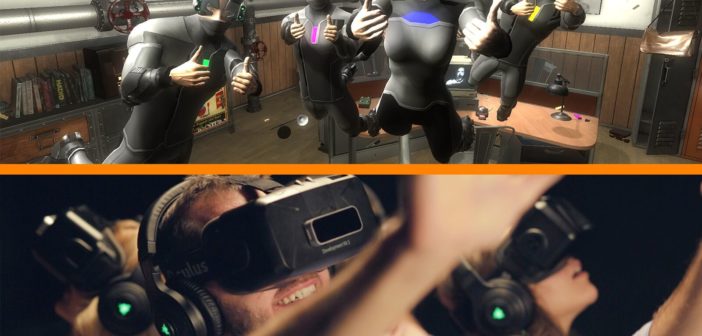

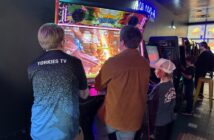

1 Comment
Pingback: Entermission – November 2019 | Entermission VR Global